Bulbs
Flower Basics
Flower Beds & Specialty Gardens
Flower Garden
Garden Furniture
Garden Gnomes
Garden Seeds
Garden Sheds
Garden Statues
Garden Tools & Supplies
Gardening Basics
Green & Organic
Groundcovers & Vines
Growing Annuals
Growing Basil
Growing Beans
Growing Berries
Growing Blueberries
Growing Cactus
Growing Corn
Growing Cotton
Growing Edibles
Growing Flowers
Growing Garlic
Growing Grapes
Growing Grass
Growing Herbs
Growing Jasmine
Growing Mint
Growing Mushrooms
Orchids
Growing Peanuts
Growing Perennials
Growing Plants
Growing Rosemary
Growing Roses
Growing Strawberries
Growing Sunflowers
Growing Thyme
Growing Tomatoes
Growing Tulips
Growing Vegetables
Herb Basics
Herb Garden
Indoor Growing
Landscaping Basics
Landscaping Patios
Landscaping Plants
Landscaping Shrubs
Landscaping Trees
Landscaping Walks & Pathways
Lawn Basics
Lawn Maintenance
Lawn Mowers
Lawn Ornaments
Lawn Planting
Lawn Tools
Outdoor Growing
Overall Landscape Planning
Pests, Weeds & Problems
Plant Basics
Rock Garden
Rose Garden
Shrubs
Soil
Specialty Gardens
Trees
Vegetable Garden
Yard Maintenance
How to Landscape With Birch Trees
How to Landscape With Birch Trees. The great American poet, Robert Frost, once wrote: "One could do worse than be a swinger of birches." For centuries, poets and tree lovers have been inspired by these trees. Their black and white bark, delicate branches and gorgeous, yellow fall foliage are a joy to behold in nature and in home landscapes, planted...
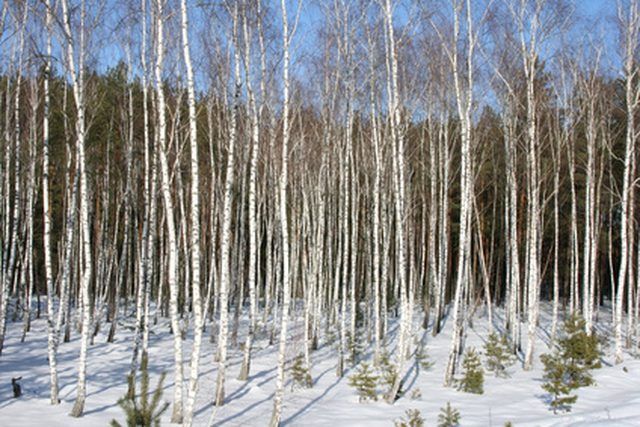
The great American poet, Robert Frost, once wrote: "One could do worse than be a swinger of birches." For centuries, poets and tree lovers have been inspired by these trees. Their black and white bark, delicate branches and gorgeous, yellow fall foliage are a joy to behold in nature and in home landscapes, planted in groves or standing alone. Birch trees are also fragile and prone to a host of diseases and problems, so it's best to give them ideal growing conditions and careful maintenance.
Plan a site for birches in your landscape where they will be seen. Birches make a beautiful statement, alone or in groups. Choose a spot to the north or east of your home, where it will receive plenty of sun on its branches, and partial shade during the hottest hours of the day. Provide a cool, moist soil bed for the shallow roots of a birch. They will not thrive in hot, dry dirt, so choose a low-lying area rather than a hilltop.
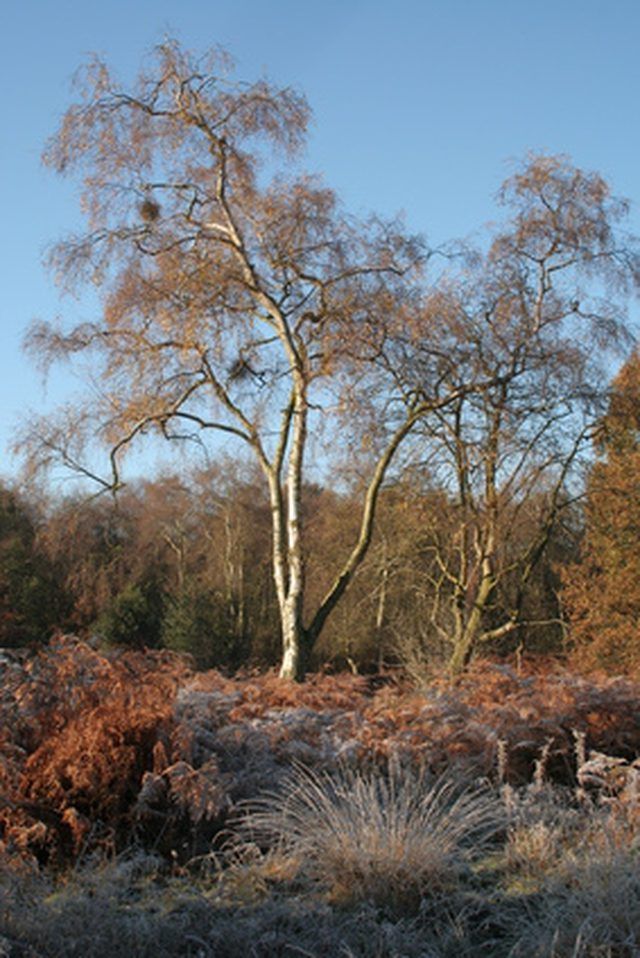
Go out in your yard and study the landscape in mid- to late-afternoon, and choose locations for planting birch where the ground is in shade. Don't forget to look up for overhead wires, since birches can grow to a height of 40 feet or more.

Plant birches near existing trees to give them adequate shelter. Choose striking combinations of trees such as birch and evergreen or spruce, or several birches together.
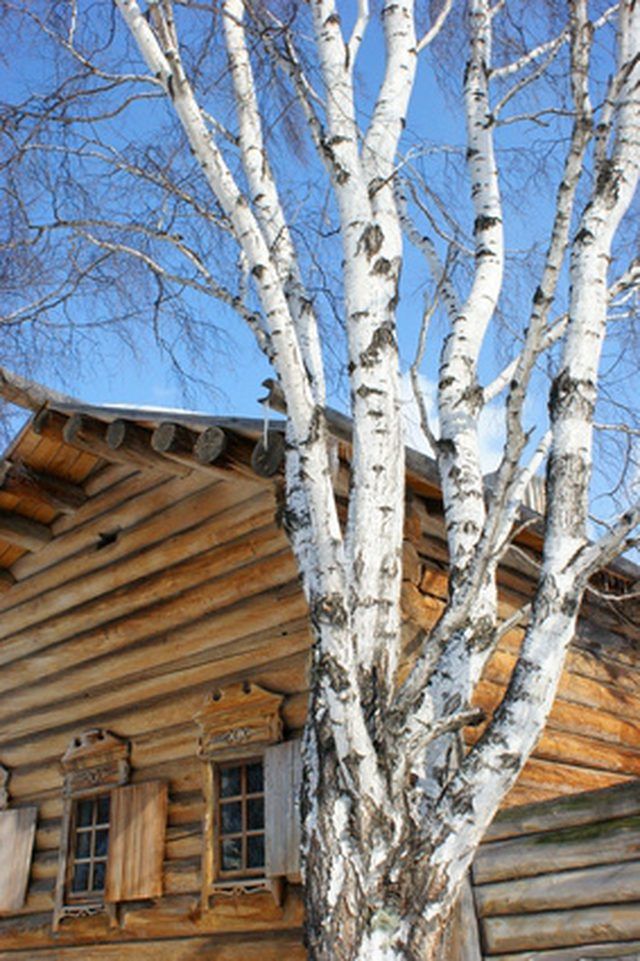
Plant birches in groups for a screening effect of thin, single trunks, or in pairs for a strong, central statement. Plan to prune birches if you want single trunks, or let nature take its course if you want double or multiple trunks. Consider planting a weeping birch near a red brick wall for a dramatic, graceful visual.
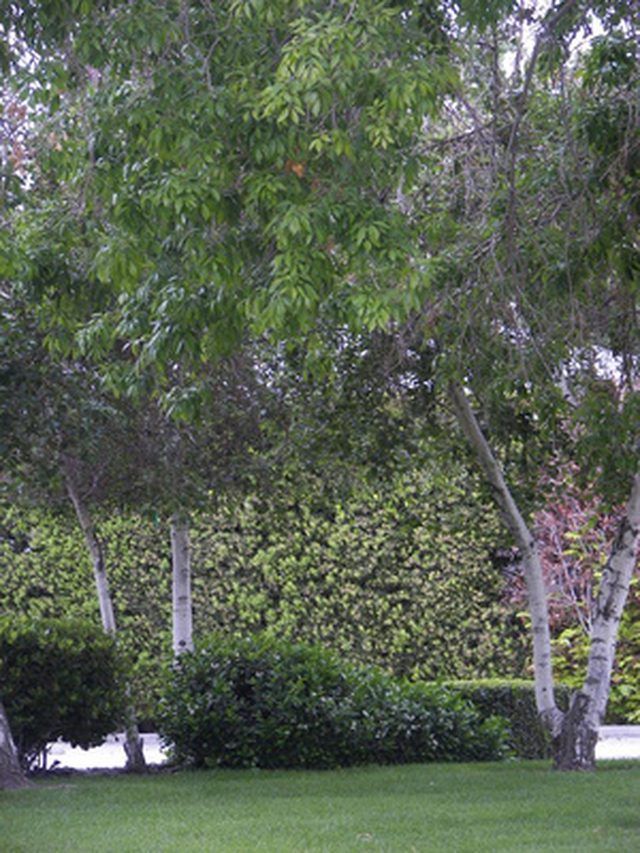
Once your birches are planted, landscape around them with stone or mulch to provide a lovely contrast with the fragile, peeling, black-and-white trunks. Lay down mulch or stone at depth of 2 to 4 inches to hold moisture and coolness at the base of the tree, but do not allow them to contact the tree's trunk or they may damage the bark.
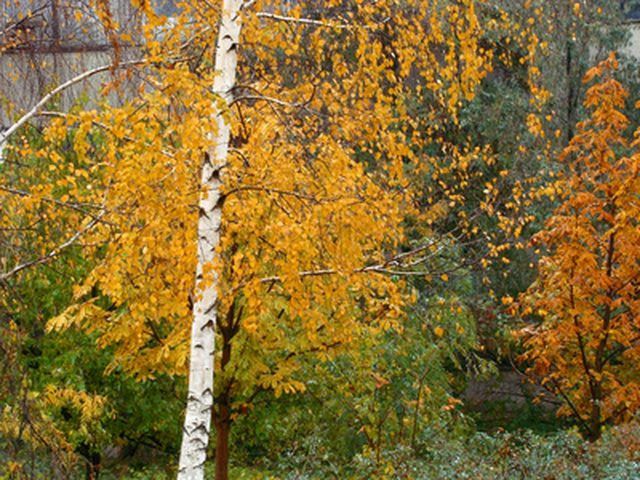
Place containers of colorful annuals at staggered heights near birches to provide added interest. Keep them in containers to reduce competition for nutrients in the soil. Plant English ivy to make the white of the bark stand out, but keep it cut back so that it doesn't climb and strangle the tree.
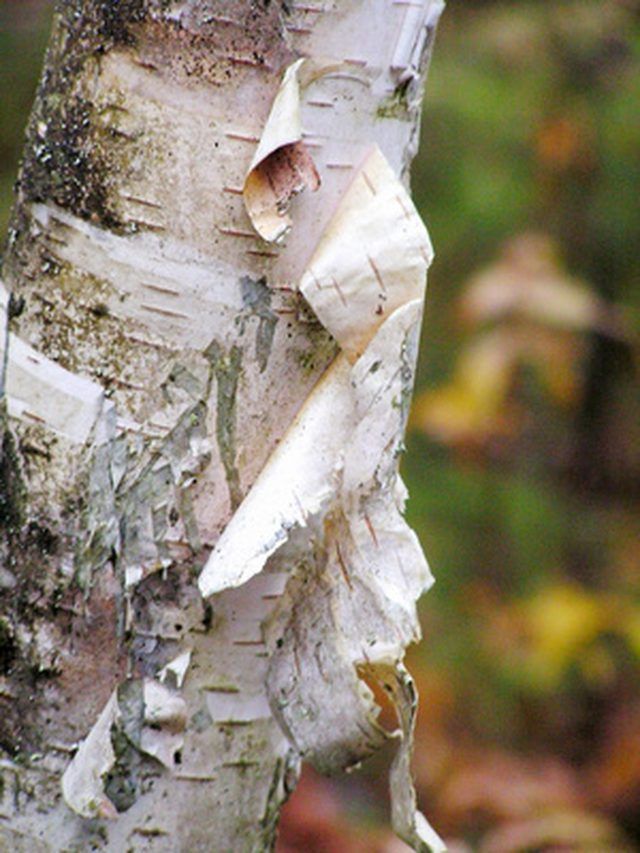
Tips & Warnings
Birches are vulnerable to boring insects. If you begin to see tiny holes in the bark, or if the tree begins to wilt and drop leaves in summer, consult with your local nursery before applying pesticides.